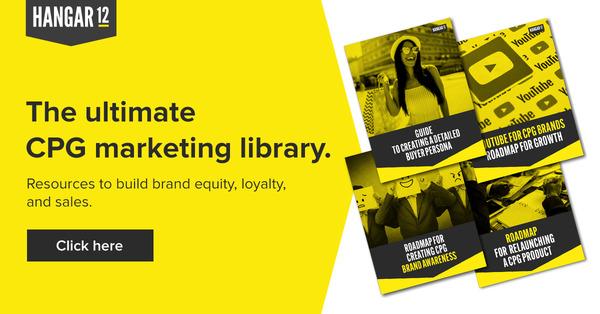
Introduction
In order to grow, you need to expand your customer base. There is only so much your current audience wants to buy. Through sponsorships and influencer marketing, your company can expand into new audiences, creating growth opportunities for your business.
Why the Focus on New Audiences?
There are a number of different ways that your company can increase its sales.
- Your current customers could buy more frequently.
- Your current costumers could increase the volume of what they purchase.
- Your current customers could expand into new products in your product line.
However, by focusing on new audiences, you diversity your customer base. You’re not just reaching out to those who already know your brand, but you’re reaching out to new audiences, with a whole new interest in purchasing certain products.
The ups and downs of sales make it important to offer up many products to a many audiences. That way, if one product or audience begins to wane, there is another to take its place.
Part I: Sponsorships
What Are Sponsorships?
Sponsorships occur when you partner with another organization to provide financial, logistical, or material support to their brand and its activities, such as event sponsorships. They receive the support, and you receive promotion.
How to Identify Potential Sponsorship Opportunities
How do you find the right sponsorship opportunities? Ask your audience. Through surveys, online engagement, or focus groups, determine what kinds of activities your audience engages in, likes, or follows, and consider whether they might be viable sponsorship opportunities for your business.
Measuring Sponsorship ROI
There are many ways to measure the effectiveness of a sponsorship campaign.
Some methods measure the event itself. You could measure:
- In person audience interactions
- Online engagement during the event
- Number of branded items you give away
Other methods look at the impact of the sponsorship on your website or sales. These can include:
- Website metrics such as total visits
- Customer churn
- Sales of a specific product
- Social sentiment - mentions on social media, and the nature of those discussions
Part II: Influencer Marketing
The Rise of Influencer Marketing
In recent years, with the rise of individuals who create paid content online, brand endorsements have changed from direct advertising to indirect promotion. Influencers small and large have helped with this change. An influencer promotes products to their own audience of followers.
Influencers have a trusting relationship with their followers, which is why this method is very effective. By using the trust and the reach of each influencer, you can launch a high-impact influencer marketing campaign that uses influencers and audience segmentation to target specific groups who are likely to be interested in your products.
How to Choose the Right Influencers
When you’re partnering with an individual to reach out to new audiences, how do you know that you’ve made the right choice?
- What values does your influencer hold? Do these align with your brand?
- What tone does your influencer bring. Does this connect with your brand voice? The influencer becomes an extension of your brand, so their values and voice must be a fit.
- What particular group are you trying to target? Using audience segmentation, determine who you are targeting. Does this influencer also target that audience?
- Consider the ROI - how expensive is it to work with this influencer, and how well does their audience connect with your desired audience?
Measuring Influencer Engagement
Once you’ve partnered with an influencer, how do you know whether or not your CPG marketing strategy is effective?
You can look at both direct and indirect metrics.
- Indirect metrics are not necessarily directly linked to your campaign. You can measure website hits, branded searches on Google, and the change in the sales of specific products mentioned by influencers. Examine these before and after your influencer marketing campaign.
- Influencers can also look at their own direct metrics on their social media. They can measure click-throughs to your website, and if they have a business or creator account on a platform such as Instagram, they can see the impressions that each image creates.
Measuring these metrics allows you to determine what type of marketing works and what influencers are the best fit for your brand, allowing you to further hone your CPG marketing strategy.
Case Studies: Real-world Examples
What does sponsorship look like? It can be wide and varied. Ballpark Franks worked with Hangar12 to create an event that targeted a specific audience at the Dew Tour. With a target audience of men who are looking for quick and delicious food, Ballpark Franks developed a “hot zone” entertainment area that attracted this audience. It incorporated a stage with branded and engaging sports-oriented activities and a visit with a BMX star. The event resulted in the distribution of 162,000 branded premiums.
Under Armour is a large company, but it works successfully with micro-influencers to generate buzz about its products. Working with micro-influencers allows for strong audience segmentation, it targets those who follow health and fitness bloggers as well as athletes. By embedding product information within written and video material, this micro-influencer marketing is strong and intuitive.

Pulling It All Together: How to Decide Between Sponsorships and Influencer Marketing
When should you turn to sponsorship opportunities, and when is influencer marketing a better choice? Firstly, you don’t necessarily need to choose. You can create a CPG marketing strategy with a bit of both. However, you might decide that one method is more effective for building new audiences.
Know Where to Find Your Audience
In large part, the choice depends on your target audience. If your audience attends specific events like sports games or conferences, then targeting these events makes a lot of sense. You have a captive audience right there, and that audience will be exposed to your brand naturally in a positive setting.
If your target audience is often online, reading blogs, on Instagram or Tiktok, then influencer marketing makes sense. Your audience will see your marketing when they scroll through their favorite apps or websites, and their trusted sources will promote your brand.
Consider ROI
If you’re a smaller business, you’ll need to determine which opportunity offers the highest ROI. For instance, if you work with an influencer who has a smaller reach but one that is targeted to your ideal audience, that might be less expensive and more effective than sponsoring an event. Then again, if you are able to sponsor a small, targeted event, this could also be quite effective.
What Kind of Relationship Do You Want?
If you’d prefer to set up an ongoing relationship with a person who promotes your brand, then influencer marketing is the way to go. If you’d prefer to target an annual event or work with another organization to provide sponsorship and promote your product,
Conclusion and Next Steps
When you’re considering partnering with an influencer or sponsoring an event, consider who your target audience is and where they tend to most engage with brands. Craft CPG marketing that aligns with your brand values and voice, and ensure that your marketing partners do the same.
Do you want to improve your CPG marketing? Visit us at Hangar12 and find resources in our ultimate CPG marketing library.
